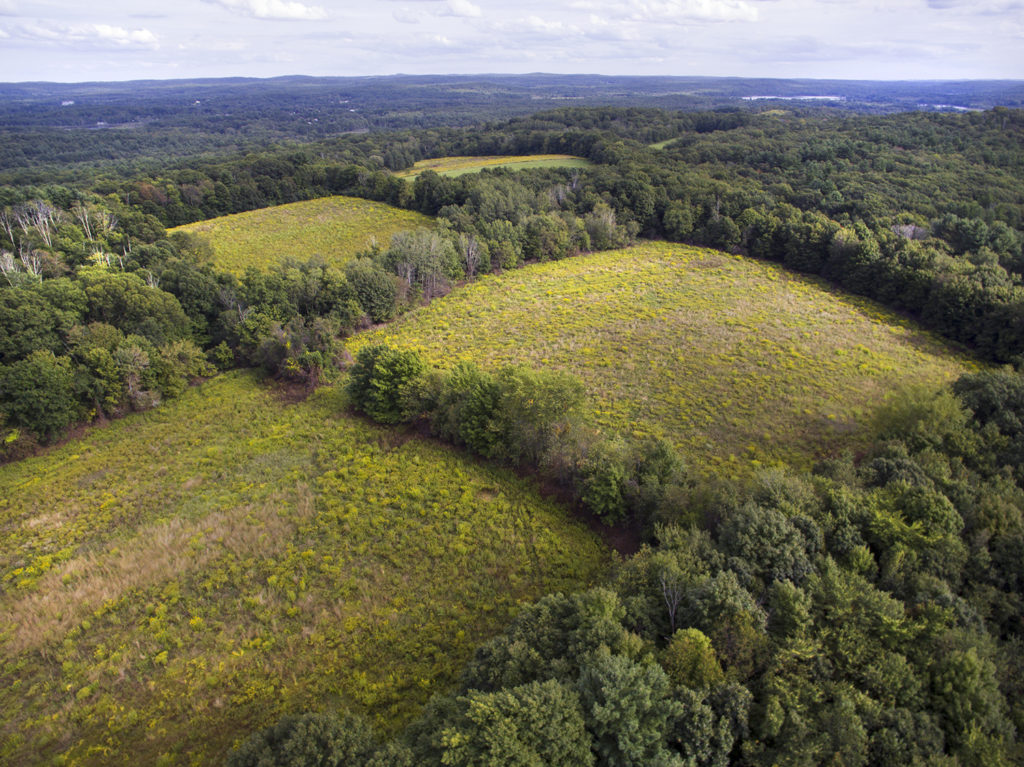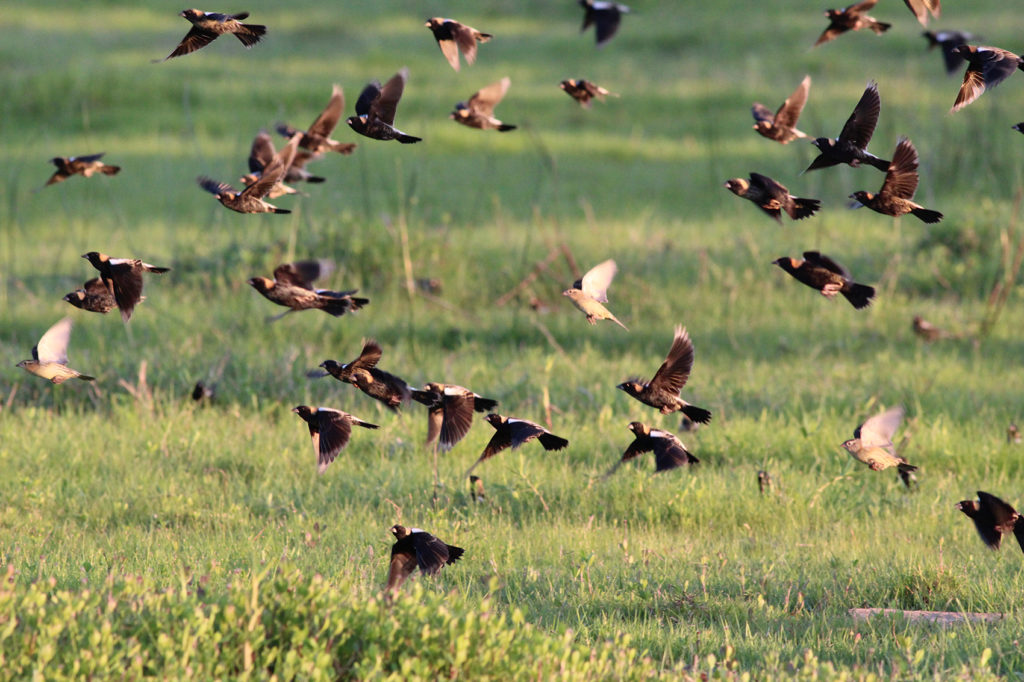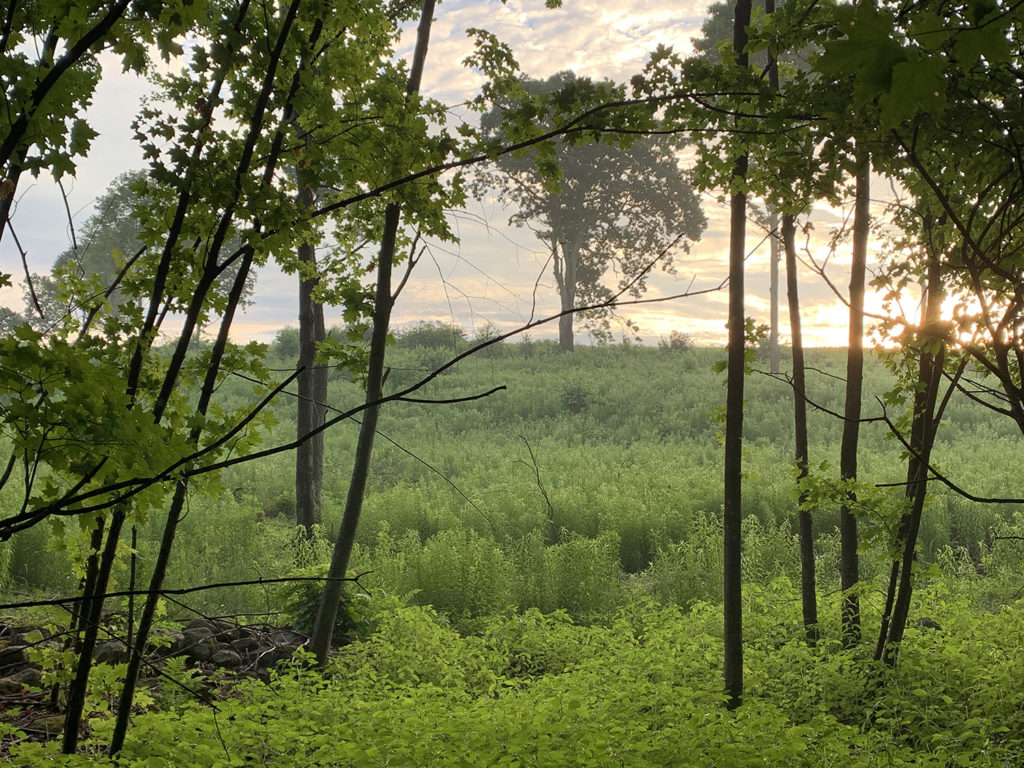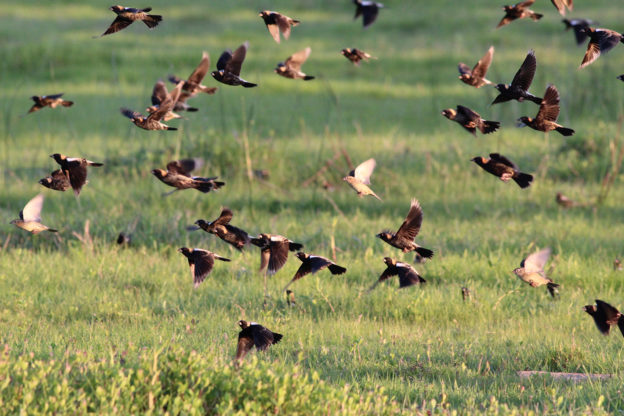Some species of threatened open-country birds are expanding into new habitat created for them at Elm Hill in Brookfield, a Mass Audubon sanctuary focused on providing shrubland, grassland, and young forest.
Prior to this year, Elm Hill was defined by a patchwork of forest and overgrown agricultural fields, some of which were separated by thin strips of woodland. This landscape offered the perfect opportunity to demonstrate how carefully planned, ecologically mindful forestry can improve habitat for declining open-country birds.

Habitat Diversity Yields Species Diversity
Habitat management at Elm Hill focused on joining fields together to create larger expanses of open space. This work wrapped up last winter, and the list of bird species using the sanctuary is already starting to reflect changes in the landscape.
A flock of at least 200 Bobolinks was recently spotted gathering in the new, larger shrubby fields. This doesn’t necessarily mean Bobolinks are breeding at Elm Hill, but it does mean the sanctuary can provide valuable staging habitat as these birds feed and gather ahead of migration.
Bobolinks are one of several dozen Massachusetts bird species that rely on big expanses of early-successional habitat—open habitat in the early stages of regrowing into forest. Early-successional habitat is a natural but temporary part of the local landscape—without fire or other disturbance, forest re-grows and matures. With small-scale agriculture and natural fire cycles giving way to development and fire suppression, birds that rely on these kinds of habitat are declining.

Other species that rely on early-successional habitat were also spotted at Elm Hill during this summer’s nesting season, like Prairie Warblers and Eastern Towhees. Prairie Warblers were entirely absent from the sanctuary during three years of bird surveys before Mass Audubon began forestry work there.
Eliminating “Edge Effects”
While small fields (like any habitat type) are great for certain birds, the pickiest early-successional habitat specialists avoid them. Nesting too near the edge of mature forest increases opportunities for predators that like to hunt open-habitat species from high perches—so certain birds rely on having big, expansive open areas far from the forest’s edge.

Expanding shrubland or young-forest habitat requires a trade-off with standing trees, so it makes the most ecological sense in areas with low-quality forest habitat. Field borders at Elm Hill used to include a lot of red pine and invasive vines, which in central Mass host a limited range of birds—mostly generalists that use other habitat types too, like Tufted Titmice and American Goldfinches.
Other parts of the sanctuary were left untouched, including mature bottomland forest with few invasive plants. These ecologically valuable forests host birds that rely on older trees and higher plant diversity, like Pileated Woodpeckers and Scarlet Tanagers.
Now that the work at Elm Hill is done, we can watch new species arriving and share and implement what we learned. Our Forestry for the Birds program is dedicated to teaching other landowners across the state about bird-friendly forestry.



To Vermont farms
This is a gorgeous farm and one of my favorite places when I was a child. It was a treat to be able to go there. I’m so happy it is being managed by mass Audubon. I hope that these practices spread northward to Ermont farms as well. Love William Freedberg’s autobiography!
Is this sanctuary open to the public?
Hi Emily, This sanctuary is not yet prepared for public visitation.